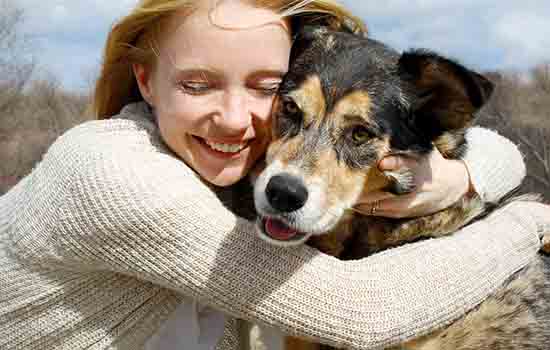Dogs have 78 chromosomes, or 38 pairs with two sex chromosomes. This is more than human’s have, which is 46 chromosomes, or 23 pairs.
You may be thinking that this is a bit strange, given the disparity in intelligence between dogs and humans.
Well, suffice it to say, the number of chromosomes in an organism has little bearing on the animal’s complexity. Many primitive animals have significantly more chromosomes. What matters for complexity is the amount of genes spread across those chromosomes.
You can think of an animal’s DNA as a cookbook for life. Each gene is an individual recipe. Recipes are grouped into chapters. In this example, each chapter is a chromosome.
Humans and dogs both have roughly the same number of “recipes” or genes. There are approximately 25,000 individual genes mapped to both dogs and people. And many of the genes are the same or function in similar ways because humans and dogs are mammals with many similar parts: the same number of limbs, the same internal organs and many of the same genetic diseases. This is true of all mammals.

Do All Dogs Have the Same Number of Chromosomes?
It might surprise you to learn that every dog, from the giant Great Dane to the tiny Chihuahua, has the same number of chromosomes.
In fact, dog breeds are almost genetically identical; very small gene variations are responsible for all of the differences in size, coloration, temperament, fur texture and all of the other qualities associated with dog breeds.
Dogs have the same number of chromosomes as wolves, jackals, dingoes, and coyotes. This means that all of those species can interbreed and produce viable offspring. The reason for this is that dogs, despite millennia of selective breeding, are still very closely related to other types of canines.
How Do Dog Chromosomes Work?
All of the chromosomes in an animal’s body occur in pairs except for those in their sexual cells, called gametes. In other words, a dog will have two sets of chromosomes in his DNA, but his sperm will only have half of these.
The female’s egg would have the other half.
When mating, the single set of chromosomes from each parent combines into a new set of pairs.
This is how an animal obtains roughly half of its genetic material from each parent.

Genes all occur in pairs, and a gene can be either dominant or recessive. If a dog has a mixture of a dominant and recessive gene, the dominant trait will usually be the one that’s visible.
For a fairly simple example, consider the merle gene. Merle is a color type found in some breeds such as Australian Shepherds and Dachshunds. It produces mottled patches of color over a solid-colored or piebald coat. The merle coat pattern is determined by a single gene, M.
A dog with an “Mm” coat type has a single dominant copy of the gene and a single recessive copy. He will display the merle coat pattern.
A dog with an “mm” type has two recessive genes. He will appear to be solid-colored and will not have any merle patches.
A dog with an “MM” type has two dominant versions of the merle gene. This is called a “double merle,” and it’s associated with deafness, blindness and other health problems.
Because the “MM” gene type can cause health defects, breeders avoid breeding two merle dogs together because it boosts the odds of the puppies inheriting both dominant “M” genes. Two “mm” dogs bred together will always have “mm” puppies, and two “MM” parents will always have “MM” puppies. Breeding “MM” or “Mm” to “mm” however will result in a mixture of merle and solid-color pups.
Do Dogs Have Sex-Linked Genetic Traits?

Like humans, dogs have X and Y chromosomes that determine sex. Two X chromosomes will yield a female; an X and a Y chromosome combination will yield a male. However, sex is not the only thing determined by the X and Y chromosome. Other genes also live on that chromosome that can be responsible for sex-linked traits and behaviors.
Unlike some animals, dogs are not sexually dimorphic. In other words, dogs don’t have unique sexual characteristics like different coat colors or special features. They do however have some sex-linked genes that can be passed from parent to pup.
If there is a mutation on the X chromosome, it will likely be hidden in female offspring as it will be “overwritten” by the other X chromosome. That mutation may however be evident in the male since he only inherited one X chromosome.
For example, dogs can get hemophilia, a bleeding disorder that prevents normal blood clotting. Hemophilia can lead to excessive bleeding, frequent nosebleeds and easy bruising. Hemophilia only occurs in males, and it is most common in German Shepherd dogs.
